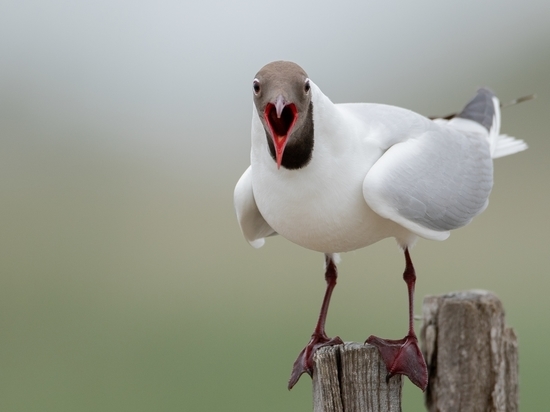As bird flu spreads, the risk of spread to humans increases, warns the World Health Organization (WHO). “This is not a reason to panic,” said Sylvie Briand, director of the WHO’s Infectious Threat Preparedness Department, in Geneva. “But we have to assess how prepared we are.”
Bird flu is now spreading on an unprecedented scale – with the exception of Australia and Antarctica, there are cases of the disease on every continent. Tens of millions of animals have already died, especially seabirds.
Additionally, the virus has been found in about 30 species of mammals. It has infected and killed mink, foxes, raccoons, martens, bears and other animals. According to Timm Harder of the Friedrich Löffler Institute (FLI) near Greifswald, the virus was also detected last summer in a harbor porpoise that lived in the Baltic Sea.
The virus does not only affect birds.
“Not only does the virus spread, but it also overcomes species barriers more easily,” Brian points out. “It also poses an increased risk to people.” The greater the expansion of the virus, the higher the likelihood that it will change and become more dangerous for humans.
According to the FLI, only one human death has been reported in the currently circulating H5N1 2.3.4.4b lineage. Last October, a 38-year-old Chinese woman died. This happened after contact with infected poultry.
Why is the risk of spreading viruses from animals to humans increasing? The expansion of residential areas, the road network, deforestation – these factors increasingly limit the habitat of wildlife. Increasing the number of protected areas is important to create a safe haven for wildlife.
Human, animal and environmental health must be considered as a whole at all levels of government, demands the WHO. The organization is advancing the One Health approach by partnering with UN agencies for agriculture (FAO), environment (UNEP) and animal health (WOAH). WHO calls on governments around the world to incorporate this principle into their policies.
Far from factory farming
Mareike Petersen of the association ProVieh asks that the breeding be urgently transferred to smaller groups. This will reduce the spread of disease and allow animals to live according to their own behavioral patterns: running freely, floating and resting undisturbed.
FLI expert Harder also considers poultry farming to be of great importance. It is here that there is the greatest contact with people, therefore, there is a high risk of transmitting the virus directly to a person.
“We must not relax our efforts to trace the virus and, above all, to prevent the spread of infection in small and large poultry farms,” said Harder, head of the National Referenzlabor für Aviäre Influenza at the FLI.
Infection rate no longer decreases
For many years, bird flu was a purely seasonal phenomenon linked to the migration of birds. Recently, cases of infection have been observed all year round. The FLI currently reports between 20 and 40 cases per week of disease in wild birds in Germany. “At the moment, there are no signs of slowing growth,” Harder says.
Read the latest news on The Eastern Herald .


